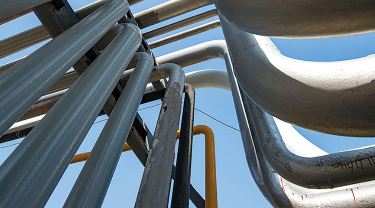Infrastructure is the lifeblood of a nation. And, according to many reports, the U.S. could badly use a transfusion.
‘Infrastructure’ is a bit of a catch all term. It includes a variety of sectors vital to a society — from hospitals, schools and prisons to roads, bridges and airports to water, sewer and energy pipelines and grids. All essential stuff and with much of it requiring significant investment. Recent estimates put the U.S. infrastructure deficit at $3.3 trillion. Annual federal spending is unlikely to bridge that gap in the next decade.
The Trump Administration has proposed a $1 trillion spending program, which would certainly be a step in the right direction. At the same time, the U.S. would have a hard time meeting the demand, so there may be opportunities to add badly-needed capacity. All of this may be good news for Canadian companies.
The U.S. is considering ways it can finance the infrastructure needs of the country. The private sector may play more of a role. Private spending on infrastructure projects has been steadily growing in recent years, and came in at $171.3 billion in 2016, the second highest level on record. And, while the Trump Administration focuses on federal programs — which may be difficult for Canadian companies to get a piece of — state and local government infrastructure spending has actually outpaced federal levels by a factor of more than ten to one. According to U.S. Census Bureau projections, in 2016 for example, combined state and local government spending on infrastructure projects totaled $263.5 billion compared with $22.5 billion at the federal level.
This is a positive sign for future growth. Even more so for the private public partnership (P3) model finally being accepted more in the U.S.
In a BMI United States Infrastructure Report (Q1 2017), the U.S. achieves a score of 64.5 out of 100 on their Infrastructure Risk/Reward Index. This is mainly from an improving outlook for the infrastructure sector and continued strength in home construction. The sector is expected to remain strong through 2025, aided by residential construction over the near term, a rebound in state and local infrastructure, and a bump in private funding through the P3 model. With well-established financial systems and deep capital markets, they note, investors should face few complications.
P3s are well-known in Canada. In fact, we are looked at as a leader in developing the so-called ‘Canadian Model’. Canada also has a strong supply chain for the infrastructure sector.
Canada has global engineering, construction and investors able to deliver a lot of value. For mid-sized and larger enterprises, the knowledge gained with P3 expertise gives them unique insight and a running head start if the U.S. government chose to use the private sector to modernize its infrastructure.For smaller companies, the P3 structure provides opportunity to enter the U.S. marketplace as a sub-contractor.
While P3s open up the entire lower 48, smaller Canadian companies may also wish to target expansion opportunities closest to home. This is a nice option before looking outside North America. In U.S./Canadian border states (Alaska, Washington, Idaho, Montana, North Dakota, Minnesota, Michigan, Ohio, Pennsylvania, New York, Vermont, New Hampshire, and Maine) alone, over $68 billion in construction was put in place in by state and local governments in 2015.
Canadian investment related to U.S. infrastructure is already quite high. It includes power utilities, pipelines, construction firms, and pension funds. A large and growing presence of these firms, with their established networks and contact systems, better places Canada to take advantage of future infrastructure projects. These networks may offer an easier path for smaller Canadian companies to break into the soon to be booming U.S. construction market.
Stay tuned to learn more about opportunities that are likely to become available.
Regards,
Patrice Guindon







